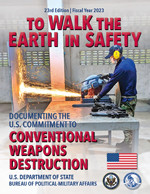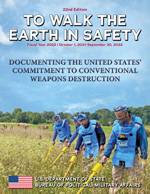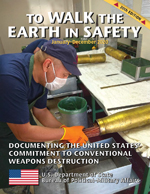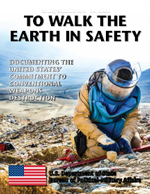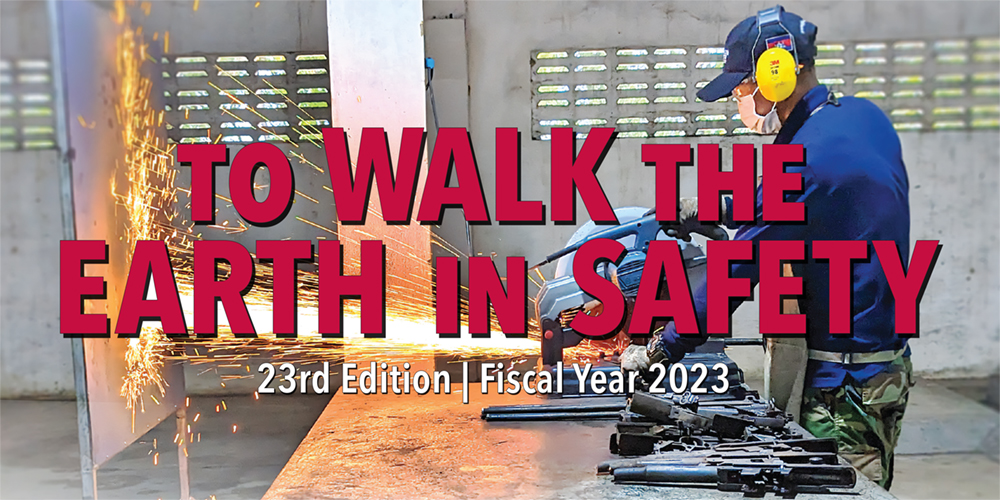
The FY24 edition of To Walk the Earth in Safety will not be published due to funding cuts at the U.S. Department of State. Please direct questions about the US CWD program to the Office of Weapons Removal and Abatement in the U.S. Department of State’s Bureau of Political-Military Affairs by emailing pm-cpa@state.gov.
To Walk the Earth in Safety is a print and online publication of the Office of Weapons Removal and Abatement in the U.S. Department of State’s Bureau of Political-Military Affairs (PM/WRA). PM/WRA’s mission is to reduce the harmful worldwide effects of at-risk, illicitly-proliferated, and indiscriminately used conventional weapons of war. To Walk the Earth in Safety was co-written, edited, designed, and produced by PM/WRA with the Center for International Stabilization and Recovery (CISR) at James Madison University from 2008-2024.
See a complete archive of To Walk the Earth in Safety on the JMU Scholarly Commons, click a cover image or browse issuu.com
|
|
|
||

